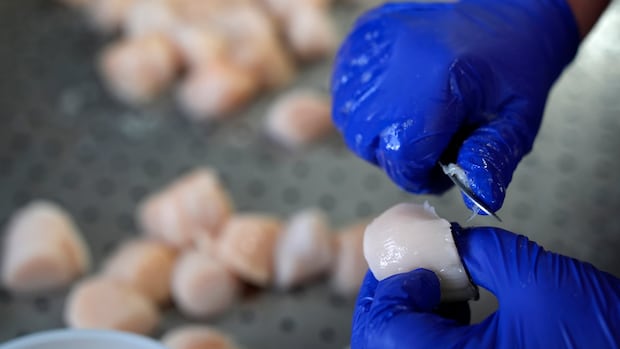Nova ScotiaOne of Nova Scotia’s most lucrative seafood species is being attacked by natural predators on one of the most famous fishing grounds. What remains to be seen is whether it’s a short-term occurrence or a sign of things to come.DFO made change in response to abundance of sea stars and crabs on the lucrative fishing groundsMichael Gorman · CBC News · Posted: Oct 28, 2025 5:00 AM EDT | Last Updated: 2 hours agoListen to this articleEstimated 3 minutesDFO reduced the total allowable catch for scallops on Georges Bank because of the impacts observed from a growing population of sea stars and crabs. (AP)One of Nova Scotia’s most lucrative seafood species is being attacked by natural predators on one of the most famous fishing grounds. What remains to be seen is whether it’s a short-term occurrence or a sign of things to come.A recently published stock assessment by Fisheries and Oceans Canada for sea scallops in Scallop Fishing Area (SFA) 27A on Georges Bank notes major changes in the amount of biomass and natural mortality rates. The changes were dramatic enough that DFO reduced the total allowable catch last December.Fully recruited biomass decreased to 13,570 tonnes in 2024 from 31,095 tonnes in 2023 after fluctuating “within the healthy zone since the 2000s,” the science advisory report said. Fully recruited refers to commercial-size scallops.Recruit biomass — the total mass of new scallops in the population — dropped by 72 per cent from 2023 to 2024.The report said the “significant interannual changes” in stock condition for the SFA are likely driven by environmental variability.“Research vessel survey data from Canada and the United States suggest that predator abundance, notably sea stars and crabs, has increased within the areas of known scallop distribution. Aggregations of predators in areas of high scallop density contribute to increases in natural mortality.”Watching for possible trendsAs a result of the observations, an interim total allowable catch (TAC) was set for 2025 at 2,100 tonnes, down from 4,000 tonnes in 2024.Susanna Fuller, vice-president of conservation and projects for Oceans North, said the level of decline in one year is a concern, but it will take several more years’ worth of data before it becomes clear whether the growth in the sea star and crab population is a trend.She said the response by DFO in the meantime will help with recruitment.“This may be another episodic event, but the best thing you can do is reduce the TAC so you’re at least leaving a biomass in the ocean that can reproduce,” she said in an interview.Fuller said fluctuations with scallops is not uncommon, so the next few years will be key.“If we don’t see it start going back up in 2026, 2027 — that’s a problem.”Industry has optionsThe report examines stock condition based on the most recent data and modelling, and provides a best guess about where things are headed. For now, scientists are not expecting a change next year. Assessments usually happen annually.In the meantime, the lower TAC is not expected to have a major impact on the bottom line for companies that operate in SFA 27A.The president of the Seafood Producers Association of Nova Scotia said in an email that the companies that work the fishery have some flexibility because they’re licensed to fish on multiple banks across the Scotian Shelf.“This allows them to move effort around based on yield and cost,” Ian MacIssac said in an email.“This was already the case last year and I expect you’ll see this continue next year to protect overall sustainability. The price for scallops is quite strong at the moment, too, which I suspect is also relieving some pressure.”MORE TOP STORIESABOUT THE AUTHORMichael Gorman covers the Nova Scotia legislature for CBC, with additional focuses on health care and rural communities. Contact him with story ideas at michael.gorman@cbc.ca
Catch limits for scallops on Georges Bank reduced due to increase in predator population











